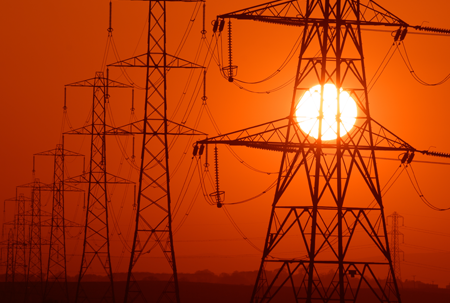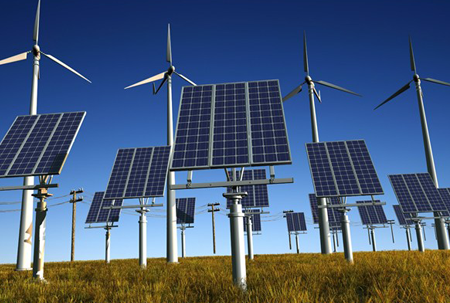INDIAN ELECTRICITY SECTOR

It is well known fact that countries which have access to abundant, affordable and reliable energy sources often achieve rapid development and stay that way by. This is achieved only by smartly harnessing its resources and investing heavily in developing the power sector which in turn propels overall growth.
In another words electrical self-sufficiency is very critical to the growth and development of a country.
India is one such country – which is well endowed with both exhaustible and renewable energy resources. Coal, oil and natural gas are available in plenty. However – with regards to smart utilization of these reserves – a lot remains yet to be done.
India has always been in the forefront of electric power generation and utilization of electricity. Major highlights of the early developments in Indian Power sector is as below:
On 24th July, 1879 electric light was first demonstrated in the Indian subcontinent by P.W.Fleury & Co at the then Calcutta.
In early 1897, the first hydroelectric power station installation in India was installed near a tea estate at Sidrapong for the Darjeeling Municipality.
The Bombay Electric Supply & Tramways Company (B.E.S.T.) was set up as a electricity generating station in 1905 to provide electricity for the Bombay tramway.
The electrification of meter gauge track between Madras beach and Tambaram was done in 1931.
India was among the first few in the world to lay down guidelines to regulate supply electricity to consumers by licensees by enacting the Indian Electricity Act in 1910. This was followed by the Indian Electric (supply) Act 1948, Electricity Regulatory Commission Act 1998 and Electricity Act 2003.


There are over 90 electric utilities companies in India (both state and private owned) involved in generation, transmission and distribution of electric power in India. Most Indian states have set up the State Electricity regulatory Commissions (SERC) which regulate the electricity sector and determine the tariff for transmission and distribution.
India is the world's third largest producer and fourth largest consumer of electricity. The utility electricity sector in India had an installed capacity of 307.28 GW as of mid-2016. Renewable power plants constituted 28.9% of total installed capacity in India.
During the fiscal year of 2014-15, the per capita electricity generation in India was 1,010 kWh with per capita electricity consumption being 746 kWh. Electric energy consumption in agriculture in India is the highest among all countries.
The per capita electricity consumption is one of the lowest compared to many countries despite cheaper electricity tariff in India.
Though as per statistics by the end of calendar year 2015, India has become power surplus country, over 200 million Indian citizens comprising or nearly 15 % of the households still do not have access to electricity supply.
The Indian power grid is demarcated into five electrical regions viz. Northern (NR), Eastern (ER), Western (WR), Southern (SR) and North Eastern (NER). The transmission system of inter-connecting these grids are reasonable strong among NR, ER, WR and NER regions comprising the Central Grid. However the SR is not having good connectivity with the Central Grid.
Inadequate last mile connectivity is the main problem to supply electricity for all users. The electricity distribution in India is still done at most places through overhead lines carried by posts, resulting in power quality problems and power cuts.
Many consumers depend on Diesel Generator (DG) sets using costly diesel oil for meeting unavoidable power requirements due to power cut. Nearly 80 billion KWh electricity is generated annually in India by DG sets, which are consuming nearly 15 million tons of diesel oil.
Key implementation challenges for India’s electricity sector include new project management and execution, ensuring availability of fuel quantities and qualities, lack of initiative to develop large coal and natural gas resources available in India, land acquisition, environmental clearances at state and central government level, and training of skilled manpower to prevent talent shortages for operating latest technology plants.
Despite abundant reserves of coal, India is facing a severe shortage of coal. The country isn’t producing enough to feed its power plants. Some plants do not have reserve coal supplies to last a day of operations. Poor coal transport infrastructure has worsened these problems. Most of India’s coal lies under protected forests or designated tribal lands. Any mining activity or land acquisition for infrastructure in these coal-rich areas of India has been rife with political demonstrations, social activism and public interest litigations.
Poor pipeline connectivity and infrastructure to harness India’s abundant coal bed methane and shale gas potential.
The giant new offshore natural gas field has delivered less fuel than projected. India faces a shortage of natural gas.
Hydroelectric power projects in India’s mountainous north and north east regions have been slowed down by ecological, environmental and rehabilitation controversies, coupled with public interest litigations.
India has been dependent to a large extent on energy imports to meet its energy requirements. As per the estimates of the Planning Commission to sustain a growth of 8% growth in economy, by 2032 India needs to increase primary energy supply by 3 to 4 times and its electricity generation by 5 to 6 times of 2003-04 levels.
Losses in the connector systems/service connections leading to premature failure of capital equipment’s like transformers
India’s nuclear power generation potential has been stymied by political activism since the Fukushima disaster in Japan.
Average transmission, distribution and consumer-level losses exceeding 30% (the world average T & D loss is below 15 %).
Key implementation challenges for the Indian Electricity Planners – include (a) Ensuring Funding for New Projects, (b) Execution and Management of New Projects, (c) Ensuring Fuel Availability, (d) Overcoming initiative to develop large resources of Coal, Oil and Natural Gas available, (e) Land Acquisition, (f) Obtaining Environmental Clearances, (g) Privatizing the Energy and Electricity sector and (h) Managing Manpower and (i) Talent Shortage.
The International Energy Agency ( IEA ) estimates that India needs to invest at-least 135 billion US Dollars to provide universal access of electricity to the Indian population. Another study highlights that for every rupee invested in Generation of Electricity, around 3 more need to be invested for Transmission and Distribution of Electricity. This puts lots of challenges for the planners.
Summing up, the Power sector in India needs lot more attention and investment in a concerted way.

Copyright © 2017 VsolV, Rights Reserved.| Privacy Policy | Terms of Use | Designed by HourGlassIT | Web Design Services Chennai